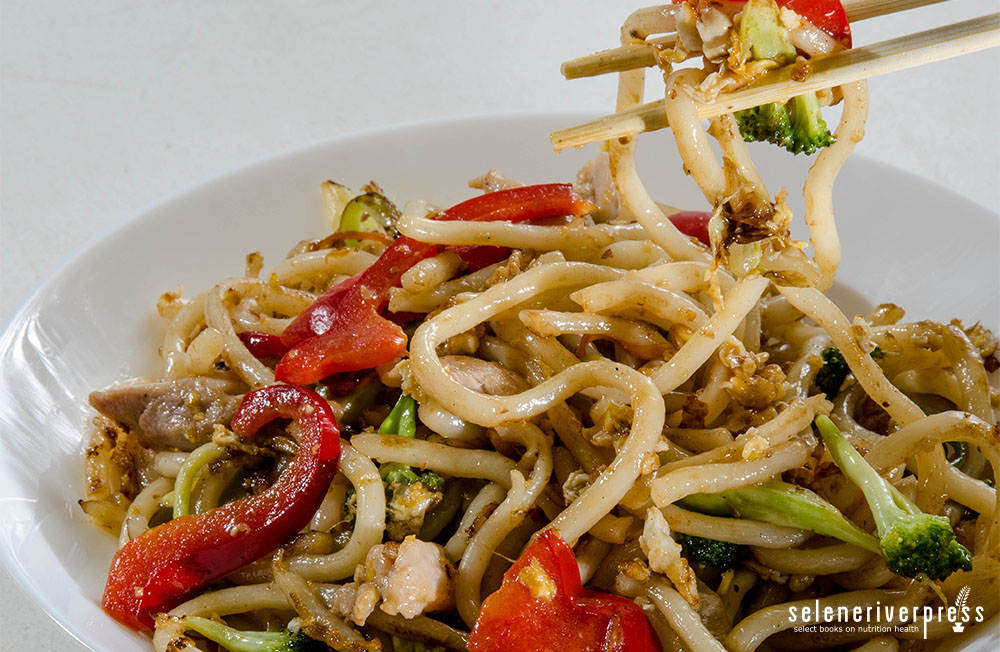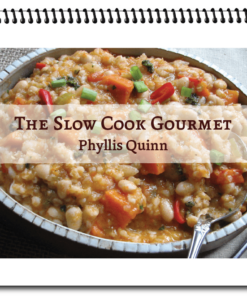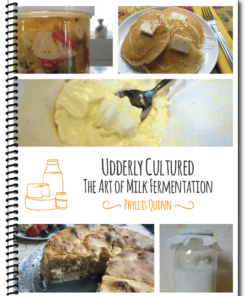Ask Chef Phyllis
I’m confused about noodles—egg noodles, no-yolk noodles, soba noodles, udon, ramen, rice noodles? There are even restaurants called “Noodles” to further confuse me. Are there any noodles that are wheat-free or gluten-free for sure? It seems to me that cooking noodles at home should be easy. Mine don’t taste as good as take-out ramen or udon, so I bring them home from the Saigon restaurant maybe once every two weeks. Can you help?
—Jane B. from Lyon, Colorado
Noodles are an ancient food. They’ve been around for at least 4,000 years in China, where most historians believe they are from. But we know that noodles caught on. They are very much a staple food in many cultures, and most of the modern world uses them in one form or another.
Basically, noodles are unleavened dough (flour, rice, or grain, and water—and, sometimes, eggs and salt) mixed together in a uniform but uncomplicated way. The dough is rested before being stretched or rolled or extruded with a machine into many shapes, and then cooked, usually by boiling. Sounds simple enough, and it is. But flavoring the noodles, Jane—that is the hard part.
Back to basics. Noodles vary by shape—they can be long, round, flat, short, springy, pushed through a riser, or scraped off a board with a knife like German or Swiss spaetzle. They also vary by grain—rice, buckwheat, wheat. If you search online you might find even more exotic grains, like amaranth or quinoa.
I recently watched a cooking show on TV where master noodle makers turned three- to four-feet long strands of dough into noodle perfection, much to my amazement. Quite the skill—and, quite possibly, an art!
I also learned that most companies now make gluten-free noodles for common products we all know as pasta. Who knew that egg noodles can be purchased gluten-free for classic chicken noodle soup! No matter the type or shape of noodle, whether it’s rice noodles, ramen, udon, or buckwheat, or lasagna, cavatelli, penne, orzo, elbow, bowtie, spaghetti, or fettuccine—it’s now available gluten-free.
But it is the sauce, in my opinion, that make noodles so popular the world over. What sauce you use simply depends on what part of the world you wish to visit today. Now that’s amazing.
Here are two great sauces to discover below. The first is for Better-Than-Take-Out Udon Noodles with Cabbage, and the second is for Take-Out Style Ramen Noodles with Ginger & Scallions. Enjoy!
Better-Than-Take-Out Udon Noodles with Cabbage
Ingredients
2 (7 oz.) packages udon noodles
6 cups boiling water
4 teaspoons sesame oil, divided
2 tablespoons peanut or olive oil, divided
4 cups coarsely chopped green cabbage
8 oz. ground or finely minced pork
5 scallions or green onions, white and green parts chopped, dark green tops thinly sliced and reserved for garnish
1 teaspoon red pepper flakes
⅓ cup mirin, rice wine, or dry sherry wine
⅓ cup soy sauce
2 teaspoons finely grated peeled fresh ginger
1 tablespoon toasted sesame seeds, for garnish
Instructions
- Place noodles in a large heat-proof bowl. Cover with 6 cups boiling water. Let sit for 1 minute. Stir to break up, then drain. Place noodles back into the bowl. Add 2 teaspoons of the sesame oil and toss well.
- Heat 1 tablespoon of peanut or olive oil in a large skillet over medium high heat. Add cabbage. Cook, tossing often, until edges are browned, about 4 minutes. Place the cabbage on top of the noodles. Set aside.
- Add remaining tablespoon of oil to the skillet, then add the pork, breaking it up if necessary. Cook until the pink color is just lost and the pork is slightly browned. (Do not overcook.) Stir in the scallions, finely grated ginger, and red pepper flakes.
- Add noodle-cabbage mixture to skillet. Add mirin, rice wine, or sherry. Add soy sauce and 2 remaining teaspoons sesame oil. Mix well, about 4 to 5 seconds, until noodles are well-coated.
- Divide noodles into 4 bowls. Top with reserved scallion tops and sesame seeds. Serve immediately.
Take-Out Style Ramen Noodles with Ginger & Scallions
Chef’s note: Pouring the simmering hot oil over the ginger, garlic, and scallions not only mellows the sharpness of these ingredients but also opens up their flavor. The secret to over-the-top homemade “take-out” is known as “tempering.” But, as I’m fond of saying, that is yet another post.
Ingredients
1 (5-inch) piece of ginger, peeled and finely chopped
4 cloves garlic, finely chopped or grated
1 large bunch scallions, very thinly sliced on the diagonal, divided
½ cup oil
2 tablespoons soy sauce
1 tablespoon rice vinegar
1 teaspoon sesame oil
1 teaspoon freshly grated black pepper
1 teaspoon honey
½ teaspoon sea salt
4 (5 oz.) packages ramen noodles (dry or fresh)
Chili oil, for finishing, optional (I use it sparingly)
Toasted sesame seeds, for garnish
Instructions
- Toss ginger, garlic, and two-thirds of the scallions in a bowl. Heat oil in a small saucepan until it shimmers but isn’t smoking. Immediately (and carefully) pour oil over the ginger-garlic-scallion mixture. Let sit for 5 minutes.
- Mix soy sauce, rice vinegar, sesame oil, black pepper, honey, sea salt, and remaining scallions into the oil mixture. Let sit for 15 minutes. Cook ramen noodles according to package directions and drain.
- Toss hot noodles into a large bowl, adding as much sauce over them as you like. Mix well.
- Divide into warm bowls. For garish, pass around the chili oil and toasted sesame seeds. Serve immediately.
I hope these recipes will help you enjoy making great take-out at home.
Image from iStock/B.Pardo Fotografia.
 Get self-health education, nutrition resources, and a FREE copy of A Terrible Ten: Health Foods That Ain't ebook.
Get self-health education, nutrition resources, and a FREE copy of A Terrible Ten: Health Foods That Ain't ebook.



